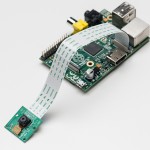Here we go again. We got confused which OS to download and install for our Raspbery Pi Media Centre. Two major OS although there is a new challenger XBian.
Open Embedded Linux Entertainment Center (OpenELEC) is a small Linux distribution built from scratch as a platform to turn your computer into an XBMC media center. OpenELEC is designed to make your system boot fast, and the install is so easy that anyone can turn a blank PC into a media machine in less than 15 minutes.
- It’s completely free
- A full install is only 80-125MB
- Minimal hardware requirements
- Simple install to HDD, SSD, Compact Flash, SD card, pen drive or other
- Optimized builds for Atom, ION, Intel, Fusion and more
- Simple configuration through the XBMC interface
- Plug and Play external storage
- File sharing out of the box
As it’s deisnged to be lightweight, OpenELEC won’t put a strain on your systems resources like it’s processor or memory – meaning you’ll need less of them. With support for NVIDIA’s ION platform, AMD’s Fusion platform and Broadcom’s Crystal HD chip, OpenELEC can support high definition content on machines with low-powered processors by offloading video content to supported graphics cards and decoders. This means you can build (or buy) small, silent machines to be effectively used as a media center.
OpenELEC has many builds available, including a ‘catch-all’ build that will run on almost any x86 Pentium 4 or later, but also has optimized builds for certain platforms including:
- NVIDIA ION and ION2
- Intel GMA HD chipsets
- AMD Fusion
- Apple TV 1 (using Broadcom Crystal HD)
- Raspberry Pi
OpenELEC focuses on keeping everything as streamlined and simple as possible so you can focus on enjoying your media. It is a minimal build that includes everything you need for a great XBMC experience. It’s roughly an 80MB download and fits on even the smallest sdcard.This has advantages and disadvantages depending on your needs. It boots insanely fast, but your options to install other programs are limited. If all you want is XBMC, choosing OpenELEC is a no-brainer. It’s simple to install, use, and maintain. E.x. Upgrading is as easy as copying 4 files to a single SBM share and rebooting.
XBian / RaspBMC are largely very similar to each other. Both based on the Raspbian (Debian compiled for RPi) distribution. It’s a full-blown Linux distro including all the bells and whistles like a development toolchain, desktop, etc. Anything you can install in Debian, you can likely install in XBian or RaspBMC too. E.x. videogames like Quake3, console emulators (snes9x, etc).
If you want more than XBMC, it may not be your ideal choice. While there are addons for some programs – you can install rsync, nano (command line text editor), and transmission (bittorrent client) for example – the options to add external programs are limited unless you build your own addons.
If you want to have a full-fledged Linux desktop and other apps besides XBMC, these two may be a better choice. XBian seems slightly faster. RaspBMC may be slightly easier to upgrade. I can’t say one or the other is better; they both work great. But due to their nature, they’re slower to boot and a bit more manual to update. Updating the base system is done with apt-get update && apt-get upgrade. Updating XBMC varies – both distributions have their own custom update systems for XBMC.
You could install Windows or your favourite Linux distribution on your computer and then XBMC on top – and it would work – but it wouldn’t be as fast or as easy as OpenELEC. OpenELEC is built from the ground up specifically for one task, to run XBMC. Other operating systems are designed to be multi-purpose, so they include all kinds of software to run services and programs that won’t be used. OpenELEC, however, only includes software required to run XBMC.
Unlike other XBMC solutions, OpenELEC is not based on Ubuntu. In fact, it’s not based on any Linux distribution; OpenELEC has been built from scratch specifically to act as a media center. That means it doesn’t include drivers for things that just won’t be used like 3G cards and graphics tablets, for example.
In addition, OpenELEC is designed to be managed as an appliance: it can automatically update itself and can be managed entirely from within the graphical interface. Even though it runs on Linux, you will never need to see a management console, command terminal or have Linux knowledge to use it.

